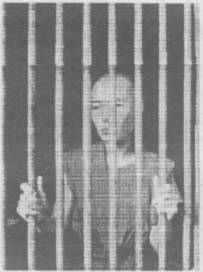| The following article is from the Winter, 1999 issue of the Snow Lion Newsletter and is for historical reference only. You can see this in context of the original newsletter here. |

[Excerpts from an article about the movie by David Maurer, published in The Daily Progress of Charlottesville, VA.]
Film maker Paul Wagner knows all too well, when it comes to making independent movies, a little celestial intervention can go a long way.
The Oscar-winning director's most recent film, Windhorse, required both luck and answered prayers. Fortunately, providence seemed to take a special interest in the making of the dramatic film that tells the stoiy of three young Tibetan living under the Chinese communist regime in contemporary Tibet.
We were filming close-ups of two of the main characters in the film throwing windhorses into the air, Wagner said. Windhorses are little pieces of paper with prayers written on them that Tibetan people throw into the wind as offerings to their gods.
We were just finishing that shot when people pointed at something behind us and started yelling, Oh my god, oh my god, look at that!'
What they saw was a spiraling vortex of wind seize the scraps of colored paper and funnel them up into the sky, creating a swirling kaleidoscope effect. As their name implies, the windhorses were riding the air currents up toward the heavens.
The camera was still rolling, so we just swung it around and everybody jumped out of the way, said Wagner, who directed and produced the film. The cameraman improvised beautifully and slowly tilted down until he came to rest framing a Himalayan peak.
That final shot of all the windhorses against the blue sky begins and ends the film. I can't tell you how many times I got tears in my eyes during the editing process when I would see that scene and remember that moment.
There were tons and tons of things that happened during the project that we laugh about, cry about, can't believe and still shake our heads at. It was an incredible adventure.
Windhorse opened its national theatrical run in Charlottesville on November 6.
Windhorse tells the story of three young Tibetans who have to struggle with personal and political problems that result from the communist takeover.
In order to capture the true emotions and color of the country, much of the film was shot clandestinely on location in Tibet and Nepal. Evervigilant Chinese communist secret police made this a risky endeavor.
From the very beginning, we talked about taking a camera into Tibet. Luckily, the technological cutting edge was just at the right place, because a new generation of what are called digital video cameras were just coming out in 1996.
We saw that as the perfect tool, because it looks like, and is, a tourist camera. We figured we could get it into Tibet by posing as tourists. The images we would get would be of a high enough quality that we could blow them up to 35 millimeter, and that's what we did.
The script, written by Wagner, Julia Elliott and Tibetan exile Thupten Tsering, is based on actual events and circumstances in contemporary Tibet. One of the most touching scenes in the film has to do with the Chinese edict that bans the displaying of photographs of Tibet's spiritual leader, the Dalai Lama.
Except for a few, all the actors in the film are Tibetans who, with no prior acting experience, gave moving from-the-heart performances.
When you see our actors, and of course they're not actors but real people, crying in scenes, they were really crying about the real issues that the film was addressing, Wagner said. Wagner said the Tibetans who worked inside Tibet and Nepal were truly courageous. Because of the fear of retribution from the Chinese, the identity of many of the actors cannot be made public.
The fear is well-founded. When the film was shown at the Washington D.C. Film Festival, the Chinese embassy denounced it as completely false and demanded that it be pulled from the festival schedule. It wasn't. The film has gone on to be well received at other festivals.
To date Windhorse has been awarded the best U.S. feature and best director at the Santa Barbara International Film Festival and received the audience award at the Florida International Film Festival. They have a website:

The film will open in the following cities in the near future:
Feb 12 San Francisco, Castro
Theater
Feb 19 Berkeley, UC Theater
Feb 26 New York, Quad Cinema
Feb 26 Los Angeles, Nuart Theater
Feb 26 San Diego, Ken Theater
March 5 Seattle, Egyptian Theater
April 2 Portland, Cinema 21 ä_æ

